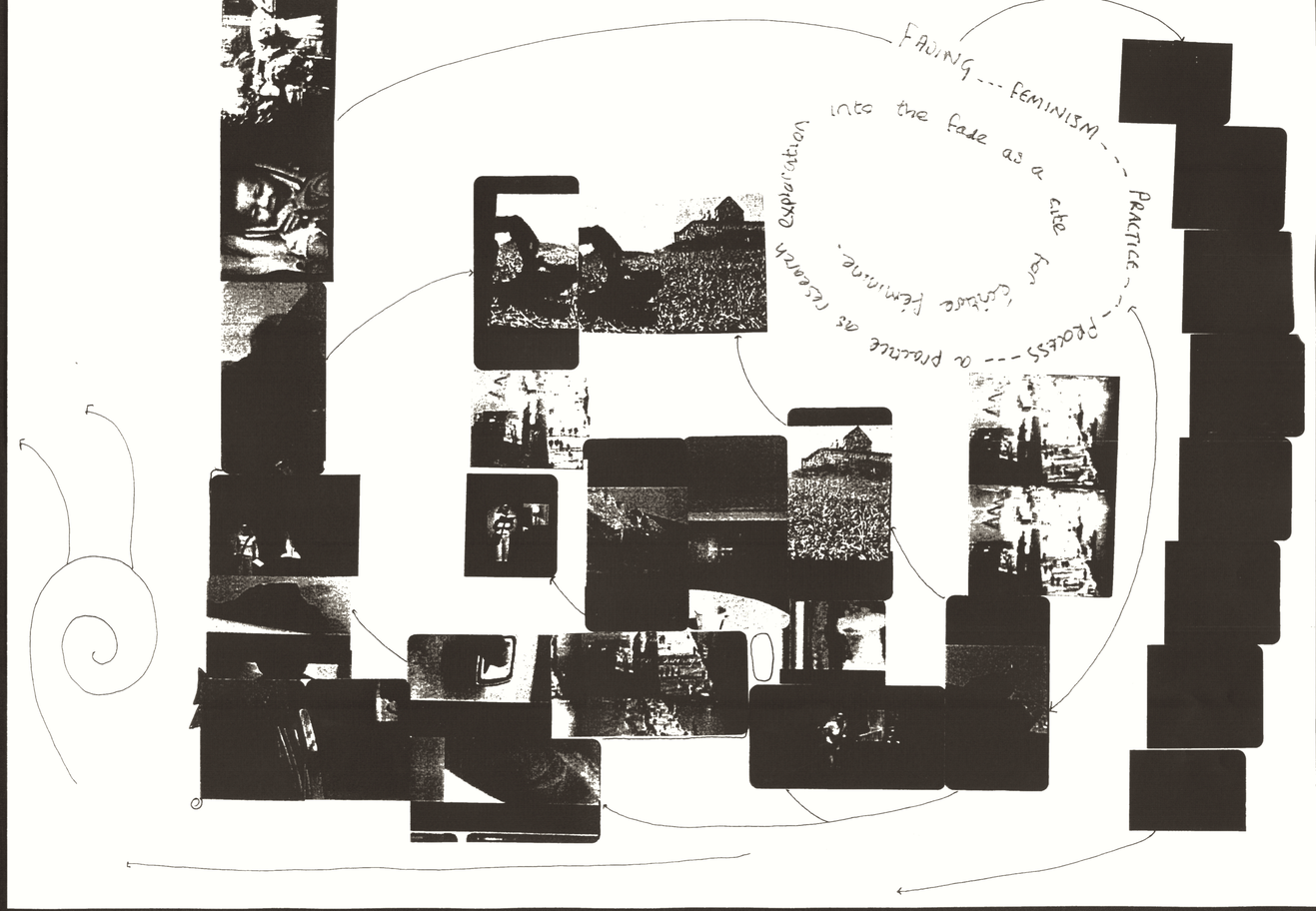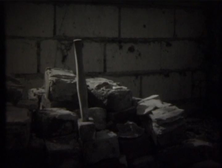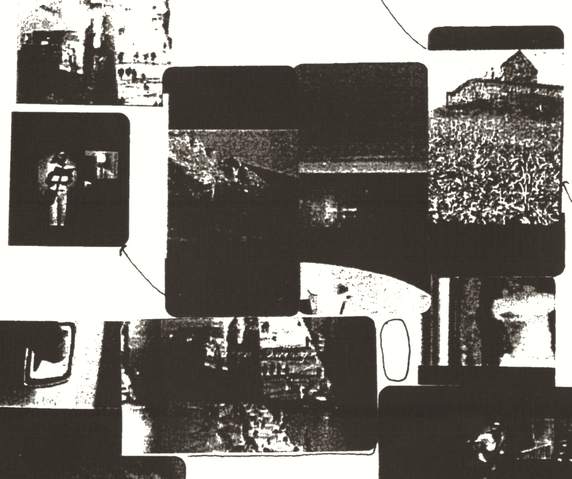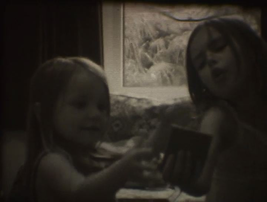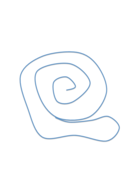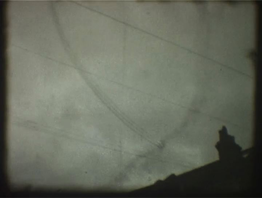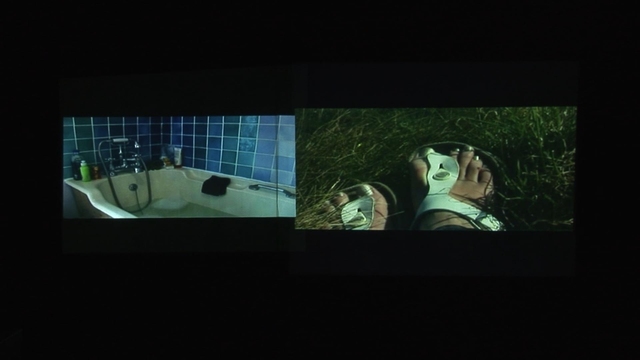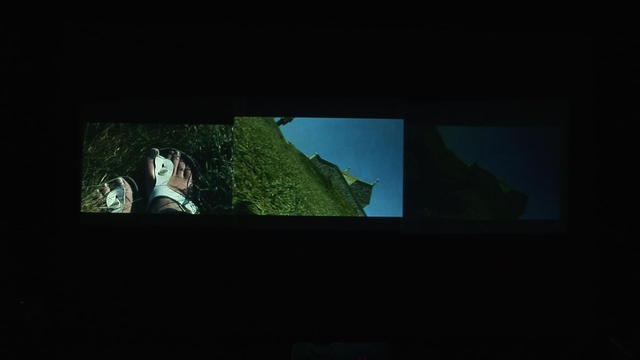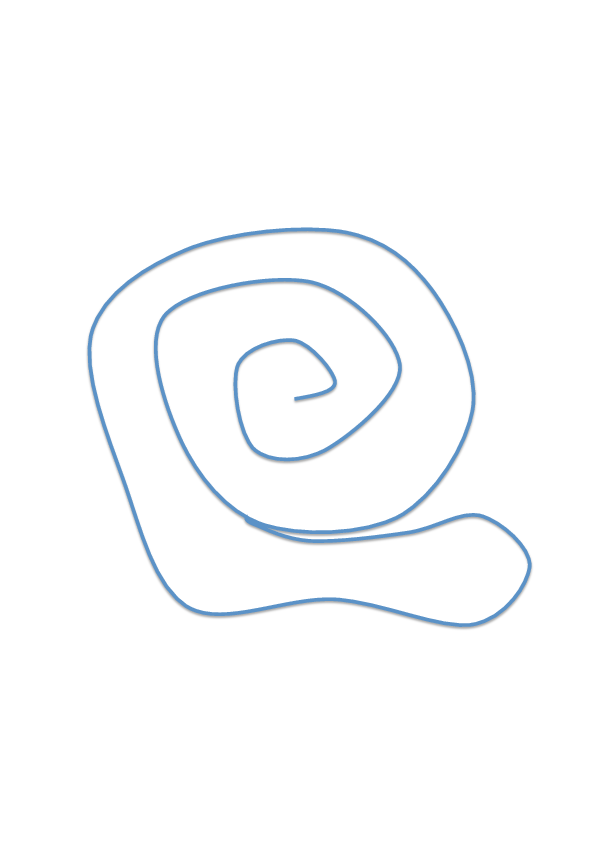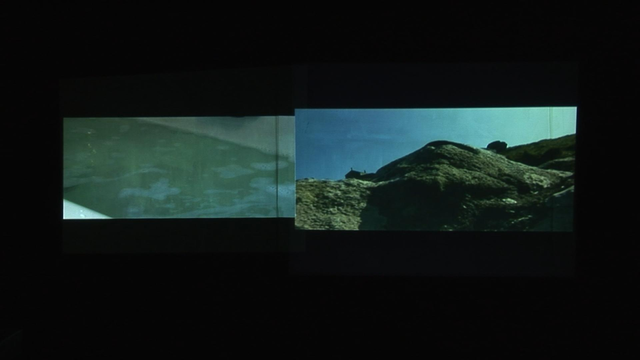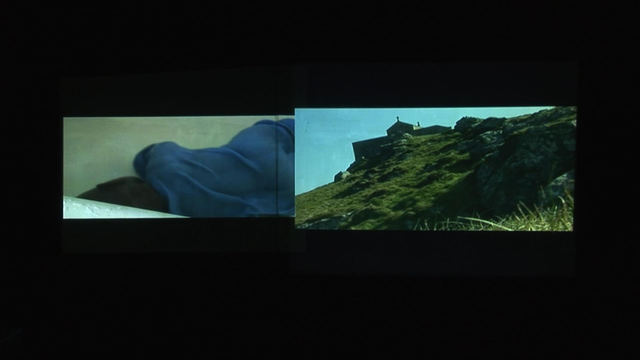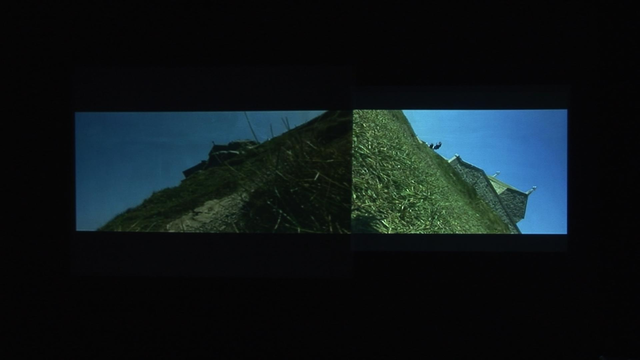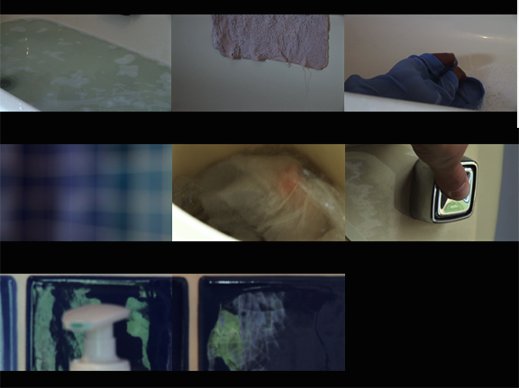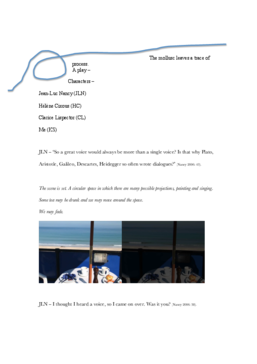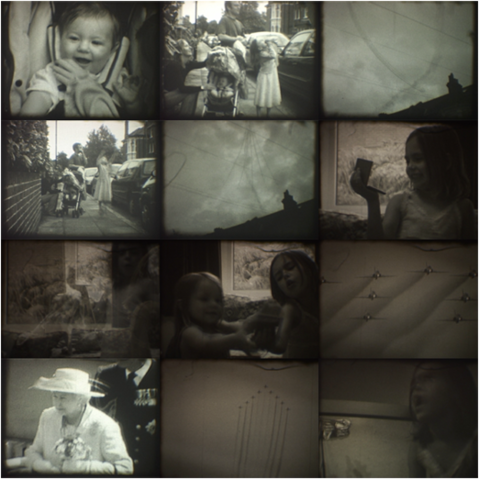The mollusc as a metaphor for creative process and practice (practice-as-research) [2006 onwards] –
Here I would like to consider my working processes and discuss how the body and process of practice-as-research can be discussed in terms of a metaphor: the mollusc. The mollusc represents the safe house containing the flesh of the body. There are distinct parts; the flesh is in excess of the harder exterior, yet they operate together. The flesh is able to protrude from the protective safe house experiencing the balance between the weight of the protection and the [read more]
|
I create shadows over the recorded imagery and record further actions to work alongside the film.
|
This ongoing layering forms part of the process. It is about documenting the images and reworking the imagery to create an ongoing process that can be changed and adapted as my working narrative develops.
|
Some moments that I’ve haaad, some mo-ments of pleasure. I think about us ly-ing, lying on a beach somewhere. I think about us di-ving, di-ving
|
off a rock
|
into another moment (Bush 1993).
|
|
These images form part of the visual essays. The images are projected in the theatre space from multiple projectors onto separate screens. I work with the juxtaposition of the images to create different meanings. The meaning is fluid depending on the position of the images and on how the live performer (me) works with the images.
In this sequence I concentrate on themes of blending the intimacy of indoor spaces alongside the abstract shots of the landscape. The feet represent a journey taken, a process between spaces.
|
|
The images of the doll in the bath echo the landscape imagery.
The bathroom is a sensual and relaxing space. It’s also a mothering space.
The trip to the church at the top of the hill becomes a mission over a rocky path.
|
There is a clash between these spaces: between patriarchy and womanhood. But there is also a coming together through the symbol of the bath baby (although the bath baby is somewhat abandoned and left face down in the empty bath).
‘My fa-ther sits alone at night with n-o lights on, his cigarette glows in the daaaaark. The living room is still, I walk by, n-o remaaark. I tiptoe past the master b-e-droom where, my mother reads her magaziiiines. I hear her call “sweet dreams”, but forget how to dreeam. … DRUM DRUM DRUM …
‘But you say it’s time we moved in too-ge-ther, raised a family of our own you and meeee, well that’s the waay I’ve always heard it should be, you want to maaarry me, we’ll maaarry’ (adapted from Simon 1970).
Bodies living – in the fading gaps of film – in the emerging spaces of the process: exploring practice-as-research through the notion of a ‘living body’ of work.
For me, growth is central to the embodiment of process, which reminds me of the Deleuzian notion of ‘living’ within film. Deleuze discusses ‘living’ within a film in relation to Dziga Vertov’s Man with a Movie Camera (1929), in which montage ‘enters into the filming, in the intervals occupied by the camera-eye (the cameraman who follows, runs, enters, exits: in short, life in the film)’ (Deleuze 1992: 40). Deleuze explains: [read more]
A Play of Characters –
silent, disappearing, fading, appearing, Here, Now
click below to play the characters –
Deleuze, Gilles. 1992. Cinema 1: The Movement-Image, trans. by Hugh Tomlinson and Barbara Habberjam (London: Athlone)
Lispector, Clarice. 1992. The Hour of the Star, trans. by Giovanni Pontiero (Manchester: Carcanet Press, 1986; repr.)
Nancy, Jean-Luc. 2006. Multiple Arts: The Muses II, ed. by Simon Sparks, trans. by Simon Sparks and others (Stanford, CA: Stanford University Press)
Nelson, Robin. 2010. ‘Node: Modes of Experience: Experiencer’, in Sarah Bay-Cheng, Chiel Kattenbelt, Andy Lavender, and Robin Nelson (eds), Mapping Intermediality in Performance (Amsterdam: Amsterdam University Press), p. 45
Simon, Carly. 1971. ‘That’s the Way I’ve Always Heard It Should Be’, on Carly Simon (Elektra Records, EKS 74082)
